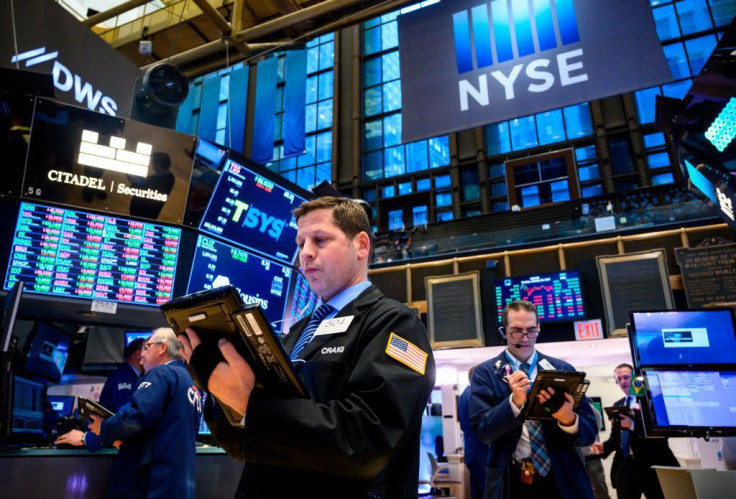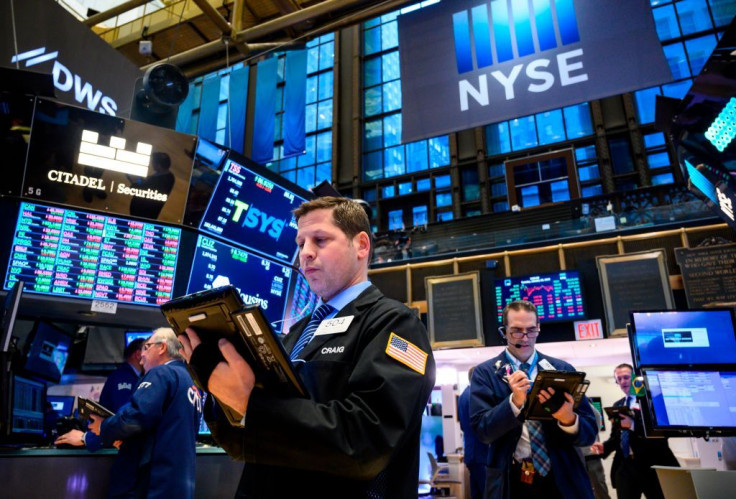Asia Stocks Decline As Dow Drops 473 Points On New China Tariffs Fears

Asian markets opened to a torrent of red ink Wednesday, taking cue from the Wall Street where the Dow Jones Industrial Average lost 473 points Tuesday on renewed fears of a trade war with China. Both the S&P 500 and the Nasdaq Composite also lost ground yesterday, their worst day since January.
Shares fell across Asia, with much of the pain being inflicted in China, Japan, and Hong Kong, according to Bloomberg.
The Shanghai Composite Index lost 0.7 percent in early trading while Japan’s Topix index dropped 1.7 percent. Hong Kong’s Hang Seng Index shed 0.8 percent. The MSCI Asia-Pacific Index fell 0.8 percent shortly before noon in Tokyo. Australia’s S&P/ASX 200 Index lost 0.5 percent.
The sea of red engulfing the Asia-Pacific markets carries over from Tuesday’s trading and follows in the wake of Wall Street’s near meltdown. The Dow Jones Industrial Average fell sharply Tuesday on fears of an intensified trade war between the U.S. and China, plunging by as much as 648.77 points at one point. It fell below 26,000 points for the first time since March 29.
Wall Street’s broad sell-off Tuesday came after U.S. Trade Representative Robert Lighthizer and Treasury Secretary Steven Mnuchin confirmed Monday evening the new tariffs on China will take effect Friday.
Analysts estimate a full-blown trade war will lower global economic growth by 45 basis points. China’s GDP might take a hit ranging from 1.2 percent to 1.5 percent.
The Dow closed down 473 points, its second-worst trading day of the year. The worst day this year was Jan. 3 when the Dow fell 660 points.
The Dow wound-up the trading day at 25,967.94 compared to Monday’s close of 26,438.48. Both the S&P 500 and the Nasdaq also took hard knocks. The S&P 500 fell 2 percent while the Nasdaq Composite Index dropped 2.3 percent.
All 30 of the Dow’s components slid, while all 11 S&P sectors traded lower in a broad sell-off more extensive than anticipated. Tuesday’s massive sell-off accelerated after the Dow sped past Monday’s lows.
The Cboe Volatility Index, which measures the 30-day implied volatility of the S&P 500 and also known as the “VIX” or the “fear gauge,” hit a new high of 21.09 Tuesday, its highest level since Jan. 23.
The awful realization President Donald Trump’s tweet Sunday threatening to raise tariffs to 25 percent on $200 billion worth of Chinese goods wasn’t a negotiating tactic but the real deal triggered the massive sell-off, which is expected to continue until Friday. Trump also threatened to impose an extra 25 percent tax on another $325 billion of Chinese goods “shortly.”
Lighthizer’s disappointing comments “further increased the likelihood of a tariff step up,” said Keith Parker, a strategist at UBS, who also said the new taxes will have a big negative impact on U.S. consumers.
Trump’s unexpected Sunday tweets sent the market reeling Monday. The Dow plummeted as much as 471 points while the Nasdaq dropped 2 percent at one point. Equities eventually recovered and closed well off their lows on news a Chinese delegation will still travel to Washington D.C. for talks. Traders had also bet Trump’s Sunday tweet was just a big bluff.
Lighthizer’s and Mnuchin’s comments poured cold water on those hopes, however.
It’s also beginning to sink in that previous news about the steady progress in the talks claimed by the administration weren’t based on reality. Media reports confirm talks with China stalled after Beijing refused to agree to measures to halt intellectual property transfers that will need changes to Chinese law.

Lightnizer on Monday admitted there were still significant issues to be hammered out in the talks, contradicting previous administration statements a deal would be attained by May 10.
"We felt we were on track to get somewhere. Over the course of last week we have seen an erosion of commitments by China," Lighthizer told Bloomberg News.
© Copyright IBTimes 2025. All rights reserved.



















